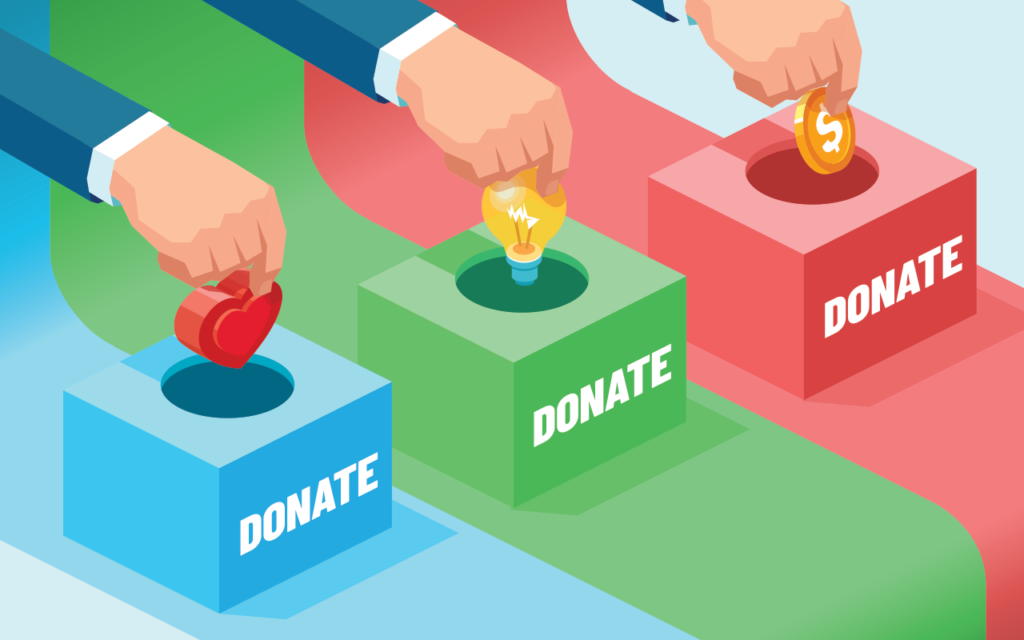
The COVID-19 pandemic has understandably left everyone dealing with feelings of uncertainty and fear. This is hard and, for some, scary. Many local nonprofit organizations and their employees are suffering. Offices are shut, budgets are getting tighter by the day, valued staff is being furloughed and programs are at risk of being slashed just when they are needed most.
As board members, volunteers, and donors, it is vital to partner with these nonprofits to help them weather this storm because, while this situation may be unprecedented, periods of crises are not.
The nonprofit community has been pushed to the brink before — the 9/11 attacks of 2001 and the Great Recession of 2008/2009 both pushed the sector to the edge, with uncertain financial markets and geopolitical confusion that unnerved donors, drove down contributions in many sectors, and threw many organizations into financial turmoil. Those that survived and later thrived realized that periods of crisis and upheaval shouldn’t result in a stubborn devotion to business as usual, nor should they force a complete halt to fundraising activity. Instead, a commitment to reflection, renewal and bold action is needed.
The same is true now. Just as the for-profit business sector has realized, the nonprofit community cannot simply sit back and hope for better days. Neither can they bulldoze forward as if it were business as usual. Organizations must survive now by preparing to thrive later.
Be consistent with communications. Keep talking to all constituents — internal and external. Share how the organization is addressing and handling the challenges of COVID-19 and demonstrate sensitivity to the needs and concerns of employees, volunteers, audience and community — as well as prospects and donors.
Be positive. Nonprofit organizations and institutions exist to make life better, and in a time of crisis they can be a respite from fear and anxiety. Sharing positive images and messages of impact reminds people of the good that nonprofits bring to the world, and that they will be there for them when this is over.
Be sensitive to personal issues. Personalize messaging whenever possible. While this is ideal whether in good times or bad, if someone is in a higher risk group or has family members who are, personalized best wishes for their continued good health can be immensely impactful.
Be aware of donors’ concerns. Individual, foundation and corporate donors may be a bit nervous with the volatility in the stock market and may want to delay decisions on gifts, slow down payments on pledges or structure more complex gifts with multiple assets, including legacy gifts. Some donors will focus their philanthropy on basic human needs, or away from capital investments to direct service or operational sustainability. This requires that volunteer and staff fundraisers are sensitive to donors’ concerns and are patient and amenable to change.
Don’t be opportunistic. Be authentic. Be authentic and genuine in communications and appeals for funds to serve those populations in need. If an organization provides services that are increasingly critical during this time, an appeal to fund those services, with deference to the pandemic and the market, may be appropriate.
Close the loop. If a request for funding solicitation has been made, don’t ignore it. Instead, email or — better still — call the prospective donor and say, “In light of the challenges before us, let’s wait to discuss our proposal for four to six weeks, ideally allowing time for these challenges to pass. In the meantime, if you have questions or would like additional information, please let me know.” Such a message is respectful of the current situation but leaves the door open if they prefer to have that discussion now.
Be disciplined. Internally, use this time to “get your fundraising house in order” so staff can hit the ground running when the pandemic passes and the market calms. This may include updating databases, contact reports and performance reports; refreshing marketing materials; reviewing campaign fundraising and communications plans; and more.
Be innovative. In challenging times, innovation is born. In the Great Recession of 2008/2009, many nonprofits saw increased partnerships and alliances, new ways of serving the public and alternative ways of communicating with constituents. It’s about survival. Look at creative ways to provide services, run events, use technology and work with staff that are actually better than what’s been done in the past.
Remember to celebrate resiliency and generosity. American donors are amazingly resilient. After the 2008-2009 recession, philanthropy rebounded quickly and reached record highs. People of all means continue to express their generosity in ways beyond philanthropic gifts — by volunteering, helping a neighbor and communicating with a friend in need. Let’s celebrate, recognize and applaud the many ways people give to one another and make their communities better.
Although these recommendations were written in response to a crisis, they represent fundamental best practice in both good times and bad. COVID-19 will end at some point, but these lessons should not. Their rigorous application will help to launch both the inevitable recovery and optimize future fundraising success and organizational impact.
Richard Tollefson is founder and president at The Phoenix Philanthropy Group, an Arizona-based international consulting firm serving nonprofit organizations as well as institutional and individual philanthropists.
Did You Know: In times like this, information is power. The Alliance of Arizona Nonprofits is working to keep organizations informed and empowered. Visit its COVID-19 Nonprofit Resource Pages. Additionally, to support our local community, consider giving to The Arizona Community Foundation’s COVID-19 Community Response Fund.
















Speak Your Mind
You must be logged in to post a comment.